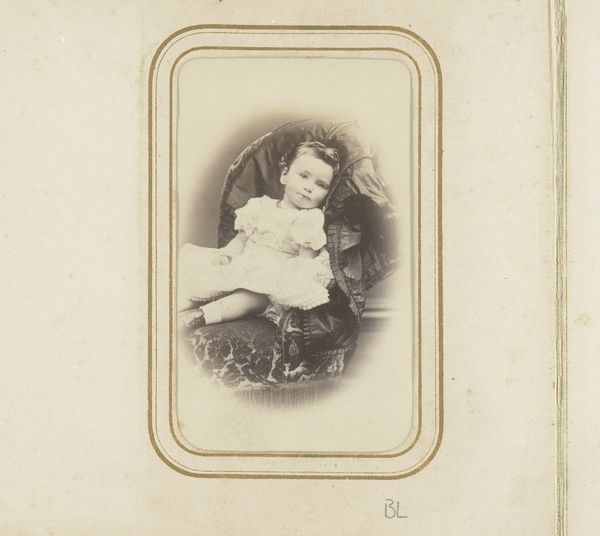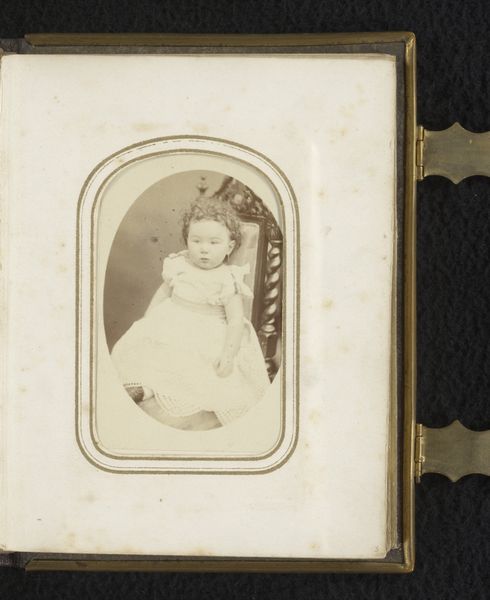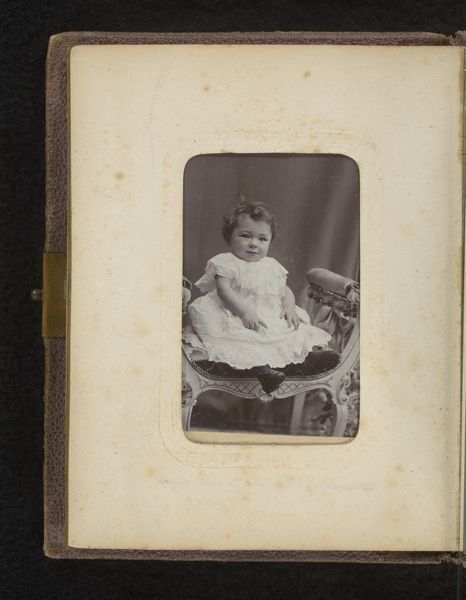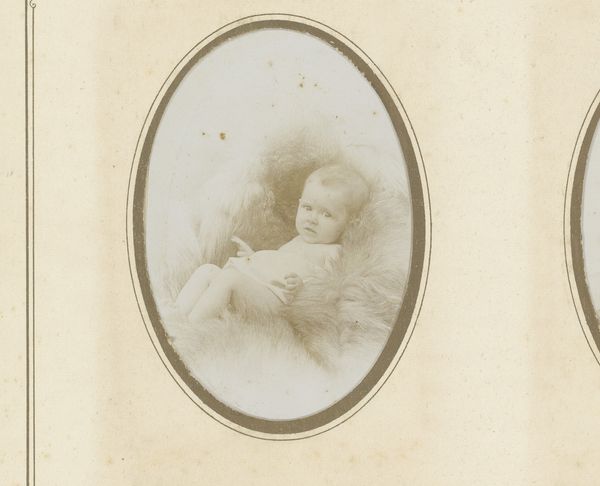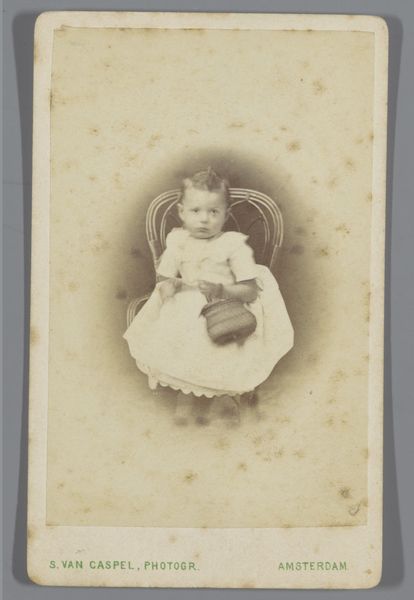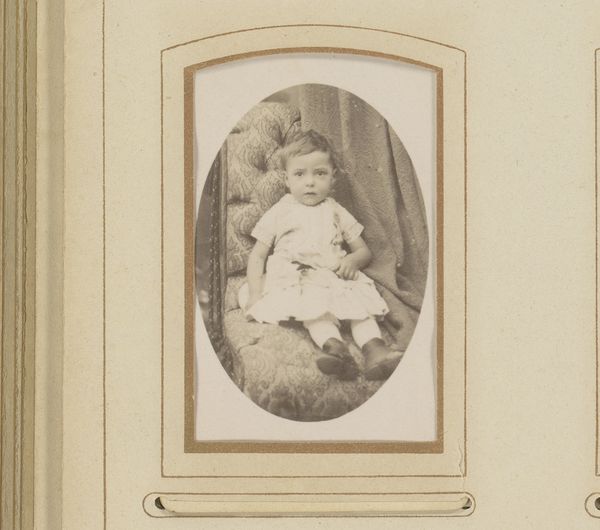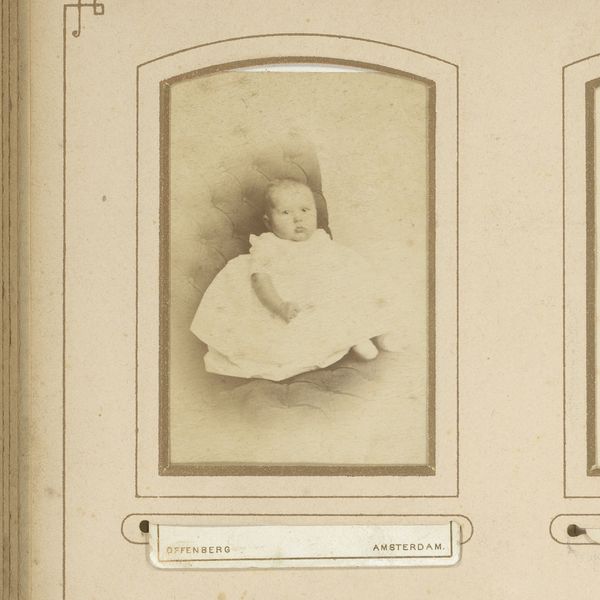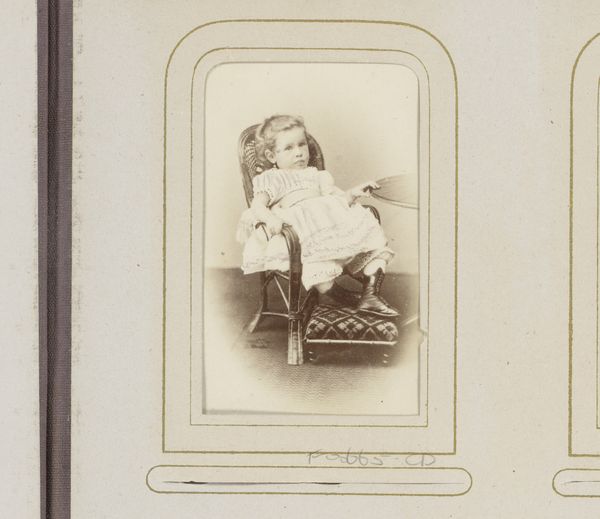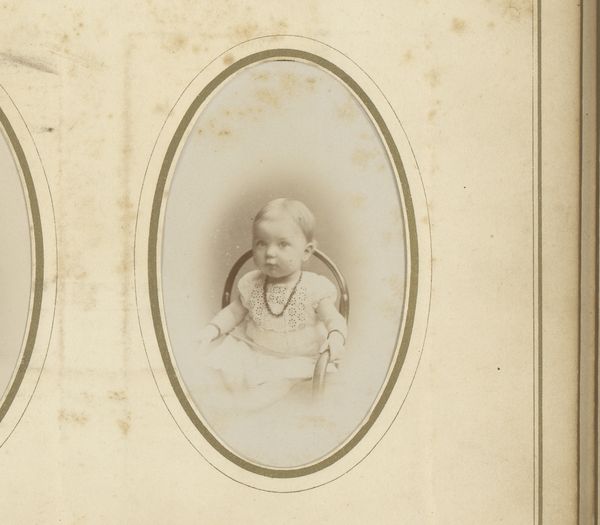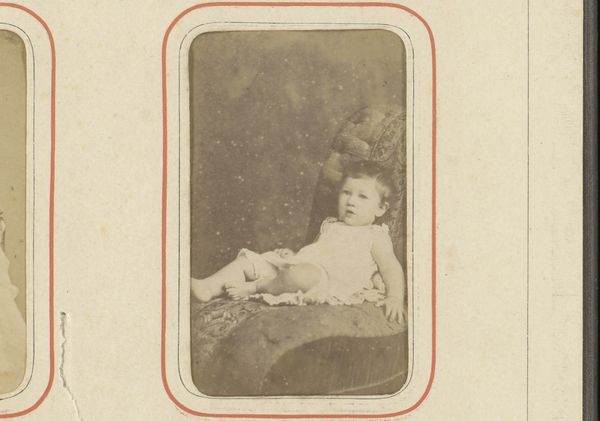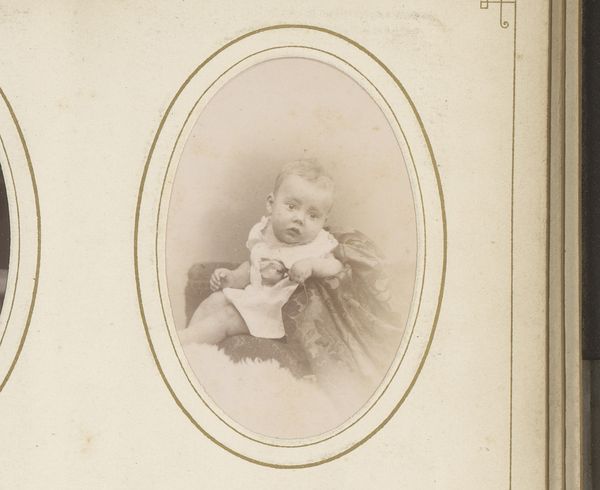
daguerreotype, photography
#
portrait
#
daguerreotype
#
photography
#
genre-painting
#
realism
Dimensions: height 83 mm, width 51 mm
Copyright: Rijks Museum: Open Domain
Curator: Here we have a daguerreotype titled "Portret van een baby," or "Portrait of a Baby," dating from 1857 to 1864, attributed to Louis Wegner and held at the Rijksmuseum. Editor: What immediately strikes me is the soft tonality of the image, and the very contained composition—that rounded rectangle acts almost like a portal into this baby's world. Curator: The creation of daguerreotypes, especially portraits, coincided with burgeoning industrialization and, for many, a rise in social mobility, indicating more people were afforded the opportunity to possess a representation of themselves and their families. This portrait reflects not just individual likeness but participation in a shifting social landscape. Editor: I'm intrigued by the photographic surface itself. Daguerreotypes are unique images, aren't they? There’s a certain alchemy to the process that translates into a unique, almost ethereal quality, despite being rooted in realism. Curator: Exactly. Looking through a contemporary lens, there's a lot we can unpack regarding infant mortality, gender roles of the period, and ideas about representation. Photography, at that time, offered new avenues for families, particularly mothers, to negotiate a relationship with their identity and family lineage, further complicated for marginalized groups whose representation has been traditionally limited. Editor: I find it incredible how much detail the artist captures—the subtle texture of the fabric, the slight movement suggested in the pose. And those highlights... they create a delicate, almost luminescent effect that draws the eye directly to the baby's face. Curator: These early photographic technologies allowed for capturing moments that before would have only been accessible to a select few—primarily the wealthy, for whom painted portraits were available. This portrait allows us to question systems of power and privilege, as well as the means by which photographic techniques allowed them to subtly permeate into even domestic representations. Editor: It’s compelling to observe how seemingly simple elements – a frame, a soft glow, a moment frozen in time – combine to generate such potent, complex readings of art history. Curator: And so, a closer examination reveals that it also represents both the possibilities for capturing individual experiences and reflecting greater historical shifts, raising fundamental questions about photographic representation, identity, and cultural legacy.
Comments
No comments
Be the first to comment and join the conversation on the ultimate creative platform.
